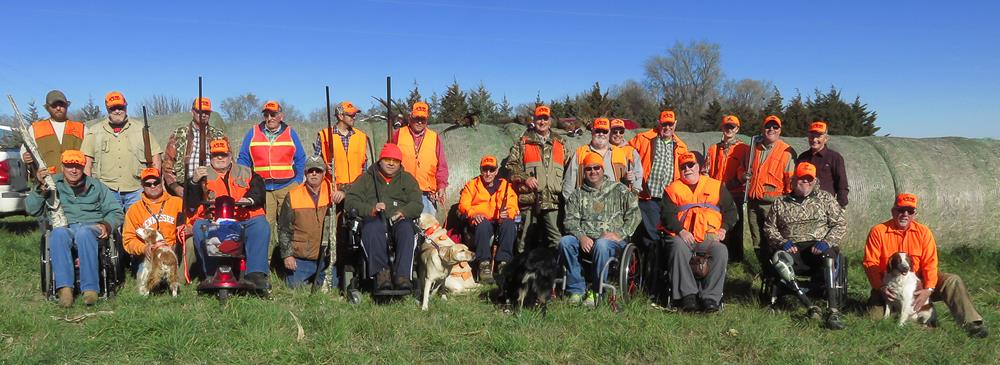
6/2/2017
OIG Report on Suicide Prevention Programs in VHA Facilities
From October 1, 2015 through March 31, 2016, VA Office of Inspector General conducted an evaluation of suicide prevention programs at 28 VHA facilities during Combined Assessment Program (CAP) reviews. The purpose of the review was to evaluate facility compliance with selected VHA guidelines.
In the report that published May 18, https://www.va.gov/oig/pubs/VAOIG-16-03808-215.pdf OIG observed and identified many positive suicide prevention practices and also identified areas for improvement, including six recommendations to VHA. Action plans have been developed to address the recommendations, with target date for completion of all actions by September 2017.
Communications strategy is for facility PAOs to proactively engage with local stakeholders, providing them with the cleared statement and messaging, and respond to media queries as they are received by providing the statement to reporters.
You are encouraged to identify a local subject matter expert to participate in interviews related to your facility’s suicide prevention program. However, should you receive a request for a national perspective, a VACO subject matter expert has been cleared with blanket approval to participate in interviews related to the national program and policy.
Please direct these requests and any questions to VHACO10B2BStaff@VA.GOV and loop in your regional OPA team for awareness.
Statement
America’s Veterans are at higher overall risk for suicide than the general public, and Veterans with conditions like depression, PTSD, insomnia and chronic pain are particularly at risk. The Department of Veterans Affairs (VA) is strongly committed to ensuring Veterans in crisis get immediate in-person care if needed, and developing long-term solutions that mitigate risks to the timeliness, cost-effectiveness, quality and safety of VA’s healthcare system.
The health and well-being of Veterans is our highest priority and we want to eliminate all instances of Veteran suicide, whether they are enrolled in VA or not. Suicide prevention is everyone’s business; family members, friends and the community can all play a role. We are working with hundreds of organizations and corporations at the national and local levels, including Veteran Service Organizations, sports teams and employers to raise awareness about suicide prevention programs and the role they can play to support Veterans and their families.
VA continues to serve as a leader in evidence-based care for suicide prevention, in the development and implementation of innovative suicide prevention approaches and resources, and in addressing Veterans’ needs through strategic partnerships with community and federal partners. One such partnership is with the Office of Inspector General (OIG); we appreciate the work they have done in evaluating suicide prevention programs at VA facilities across the system, and the opportunities for improvement. We use input from OIG and other advisory groups to identify root causes and to develop critical actions to strengthen our program.
In their report published May 18, 2017, OIG observed and identified many positive suicide prevention practices at the 28 facilities visited from October 1, 2015 through March 31, 2016. They did however, identify areas for improvement and made six recommendations. Action plans have been developed to address the areas of improvement, with target date for completion of all actions by September 2017.
Veterans can call the Veterans Crisis Line at 1-800-273-8255 or chat online at https://www.veteranscrisisline.net/ or send a text message to 838255 to receive confidential support 24 hours a day, 7 days a week, 365 days a year. Support for deaf and hard of hearing individuals is available.
Key Facts
• One Veteran suicide is one too many. Our goal is zero. It’s time to act.
• Veterans who are in crisis should receive help immediately. Far too many Veterans die by suicide—20 every day. The time to act is now.
• In July 2016, VA released the most comprehensive analysis of Veteran suicide rates in the United States ever conducted. Of the 20 Veterans who die by suicide, 14 have not engaged in VA healthcare within the past two years.
• The rate of death by suicide among Veterans who do not use VA care is increasing at a greater rate than Veterans who use VA care.
• This is a national emergency that requires bold action.
• The number of Veterans receiving specialized mental health treatment has risen each year, from nearly one million in FY 2007 to almost 1.7 million in FY 2016.
• VA is a leader in the development and implementation of innovative suicide prevention approaches and resources.
• A national advisory committee is advocating, advising, and supporting progress towards getting to zero suicides. Efforts include an emphasis on early interventions and identifying resources to address gaps.
• VA has comprehensive screening and assessment processes throughout the health care system to help identify patients who may be at risk for suicide.
• VA is partnering with community providers to expand the network of mental health support and uses innovative research to identify and develop new suicide prevention strategies.
• VA is working with hundreds of organizations and corporations at the national and local levels, including Veteran Service Organizations, sports teams and employers to raise awareness about suicide prevention programs and the role they can play to support Veterans and their families.
• Treatment works and recovery is possible, so we continue to work hard to find ways to encourage Veterans to connect with the care they earned.
• VA and our partners are committed to providing timely access to high-quality care and to help to those Veterans who may be at risk for suicide
• Programs/initiatives to enhance suicide prevention efforts:
Veterans Crisis Line
The Department of Veterans Affairs recognizes the importance of the Veterans Crisis Line as a life-saving resource for the nation’s Veterans who find themselves at risk of suicide. Of all the Veterans we serve, we want those in crisis to know that dedicated, expert VA staff, many of whom are Veterans themselves, will be there when they are needed. Since 2007, VCL has answered nearly 2.6 million calls and dispatched emergency services to callers in crisis over 67,000 times. Our focus is, as it always has been, to provide 24/7, world-class suicide prevention and crisis intervention services to Veterans, Servicemembers and their family members.
Consistent with this philosophy, we have implemented a series of initiatives to provide the best customer service for every caller, making notable advances to improve access and the quality of mental health crisis care available to our Veterans, to include:
• Since launching “Veterans Chat” in 2009, an online, one-to-one chat service for Veterans who prefer reaching out for assistance using the Internet, the VCL has answered nearly 314,000 requests for chat.
• Nearly 62,000 requests for text services have been received to date after this service was added in November 2011.
• In October 2016, VA opened a satellite VCL site in Atlanta with over 200 crisis responders and support staff.
• Prior to the opening of our new Atlanta call center our call roll over rate often exceeded 30%. Our current call roll over rate is less than 1%, with over 99% of all calls being answered by the VCL.
• VCL has implemented a comprehensive workforce management system and optimized staffing patterns to provide callers with immediate service and achieve zero percent routine rollover to contracted back-up centers.
The Veterans Crisis Line is the strongest it has been since its inception in 2007. VCL staff have forwarded over 416,000 referrals to local Suicide Prevention Coordinators on behalf of Veterans to ensure continuity of care with Veterans’ local VA providers.
To reach a trained VA professional who is specially trained to attend to emotional crises for Veterans and Servicemembers:
• Dial the National Suicide Prevention Hotline number, 1-800-273-TALK (8255). Veterans should choose option 1 to reach a VCL Responder;
• Text 838255 - A VCL responder will text back;
• Chat online by visiting https://www.veteranscrisisline.net/ChatTermsOfService.aspx
Expansion of Mental Health Care to Former Servicemembers With Other-than-honorable Discharges and in Crisis On March 8, 2017, VA Secretary David J. Shulkin announced his intention to expand provisions for urgent mental health care needs to former Servicemembers with other-than-honorable (OTH) administrative discharges. This move marks the first time a VA Secretary has implemented an initiative specifically focused on expanding access to assist former OTH Servicemembers who are in mental health distress and may be at risk for suicide or other adverse behaviors. “The president and I have made it clear that suicide prevention is one of our top priorities," Shulkin said. “We know the rate of death by suicide among Veterans who do not use VA care is increasing at a greater rate than Veterans who use VA care. This is a national emergency that requires bold action. We must and we will do all that we can to help former service members who may be at risk. When we say even one Veteran suicide is one too many, we mean it.”
It is estimated that there are a little more than 500,000 former service members with OTH discharges. As part of the proposal, former OTH service members would be able to seek treatment at a VA emergency department, Vet Center or contact the Veterans Crisis Line. “Our goal is simple: to save lives,” Shulkin continued. “Veterans who are in crisis should receive help immediately. Far too many Veterans have fallen victim to suicide, roughly 20 every day. Far too many families are left behind asking themselves what more could have been done. The time for action is now.” Before finalizing the plan in early summer, Shulkin will meet with Congress, Veterans Service Organizations and Department of Defense officials to determine the best way forward to get these former service members the care they need. “I look forward to working with leaders like Congressman Mike Coffman from Colorado, who has been a champion for OTH service members,” Shulkin added. "I am grateful for his commitment to our nation’s Veterans and for helping me better understand the urgency of getting this right.”
Program for the Repayment of Educational Loans (PREL) VA is committed to providing timely access to high quality, recovery-oriented mental health care that anticipates and responds to Veterans’ needs and supports their reintegration into their communities. Adding to our medical regulations the Program for the Repayment of Educational Loans (PREL) for eligible psychiatrists who agree to a period of obligated service with VA will increase our pool of qualified VA psychiatrists and increase Veterans’ access to mental health care. VA began taking applications in spring 2017 for the PREL program.
• PREL will enable VA to place mental health professionals in locations where they are most needed.
• PREL was established under the Clay Hunt Suicide Prevention for American Veterans Act (SAV Act), enacted in February 2015.
• To be eligible for PREL, an individual must be enrolled in the final year of a post-graduate physician residency program leading to either a specialty qualification in psychiatric medicine or a subspecialty qualification of psychiatry; the program must be accredited by the Accreditation Council for Graduate Medical Education or the American Osteopathic Association.
• Under the PREL, participants agree to a period of obligated service, to maintain an acceptable level of performance determined by supervisory review in the position to which VA appoints the participant, terms and amount of payment, and to relocate, if required, to a location determined by VA at the participant’s expense in exchange for educational loan repayments.
• A participant of the PREL who fails to satisfy the period of obligated service will be liable to the United States, in lieu of such obligated service, for the full amount of benefit they expected to receive in the agreement, pro-rated for completed service days and will pay the amount of damages that the United States is entitled to recover no later than 1 year after the date of the breach of the agreement.
Access to Same Day Services in Mental Health Our goal is to provide timely Mental Health care, including same day services, as needed. When a Veteran calls for a new mental health appointment, they receive a suicide risk assessment and immediate care if needed; for non-urgent needs, the Veteran will receive an initial screening evaluation by the next calendar day. And when they express a need for urgent attention they’ll get to speak to a mental health provider that same day. With same day access, Veterans are able to conveniently get medically necessary care, referrals, and information from any VA medical center — in addition to the facility where they typically receive care — ON THE DAY THEY NEED IT, using existing technology.
A Call to Action On February 2, 2016, VA sponsored a National summit in Washington DC entitled “Preventing Veteran Suicide: A Call to Action.” Nearly 200 mental health professionals, caregivers, Veterans and their families, Veteran Service Organizations, Members of Congress and experts from other federal agencies answered the call. Attendees made a firm, dedicated commitment to collaboratively move forward in suicide prevention efforts for our nation’s Veterans and developed a number of initiatives to more actively and aggressively work toward preventing suicide among Veterans:
• Elevating VA’s Suicide Prevention Program with additional resources to manage and strengthen current programs and initiatives;
• Meeting urgent mental health needs by providing Veterans with the goal of same-day evaluations and access by the end of calendar year 2016;
• Establishing a new standard of care by using measures of Veteran-reported symptoms to tailor mental health treatments to individual needs;
• Launching a new study, “Coming Home from Afghanistan and Iraq,” to look at the impact of deployment and combat as it relates to suicide, mental health and well-being;
• Using predictive modeling to guide early interventions for suicide prevention;
• Using data on suicide attempts and overdoses for surveillance to guide strategies to prevent suicide;
• Increasing the availability of naloxone rescue kits throughout VA to prevent deaths from opioid overdoses;
• Enhancing Veteran Mental Health access by establishing three regional telemental health hubs; and
• Continuing to partner with the Department of Defense on suicide prevention and other efforts for a seamless transition from military service to civilian life.
Frequently Asked Questions
Q – 1: Which facilities were included in this evaluation and how were they selected?
A – 1: The facilities OIG visited were a stratified random sample of all VA healthcare facilities and represented a mix of facility size, affiliation, geographic location, and Veterans Integrated Service Networks (VISN). OIG generated an individual Combined Assessment Program CAP) report for each facility. In this report, a summary of the data collected from each facility is provided, not a list of facilities.
Q – 2: What other actions are being taken to address the recommendations?
A – 2: Action plans have been developed to address the recommendations, with target date for implementation of all actions by September 2017. Some of these actions include:
• Suicide Prevention Coordinators (SPCs) will enter all outreach events into the currently existing Suicide Prevention Application Network (SPAN). This data will be monitored at a VISN level for overall compliance.
• Each Veteran that is identified as high risk has a high risk flag placed in their record within Computerized Patient Record System (CPRS) and monitored until the Veteran is deemed no longer at acute risk and the flag is removed. Each facility will report to the VISN Suicide Prevention Lead on a monthly basis to include compliance for a completed Safety Plan with documentation of contact numbers of family or friends for support, and that the patient and/or caregiver were provided a copy of the plan.
• In the event a Veteran with a High Risk for Suicide Flag is admitted to an inpatient unit treating staff on that unit will notify the facility’s Suicide Prevention Coordinator of the admission for their awareness and any needed action. Each facility will report to the VISN Suicide Prevention Lead on a monthly basis to include compliance for notification of Suicide Prevention Coordinators of inpatient admission of those Veterans with a High Risk for Suicide Patient Record Flag.
• Each Veteran identified as high risk will be monitored at least 4 times within the first 30 days after discharge and this will be documented in the Veterans medical record. Each facility will report monthly to the VISN Suicide Prevention Lead compliance of documentation of mandated post discharge encounters for Veterans identified as high risk for suicide.
• Each facility will report to the VISN Suicide Prevention Lead on a monthly basis compliance with documented review of all Patient Record Flags that have reached 90 day status.
• The Office of Suicide Prevention will develop a memo that provides guidance for the required training on suicide risk management expected to occur within 90 days of hire. Compliance will be monitored via Talent Management System and available to both Suicide Prevention Coordinators and facility managers as well as Office of Strategic Planning.


